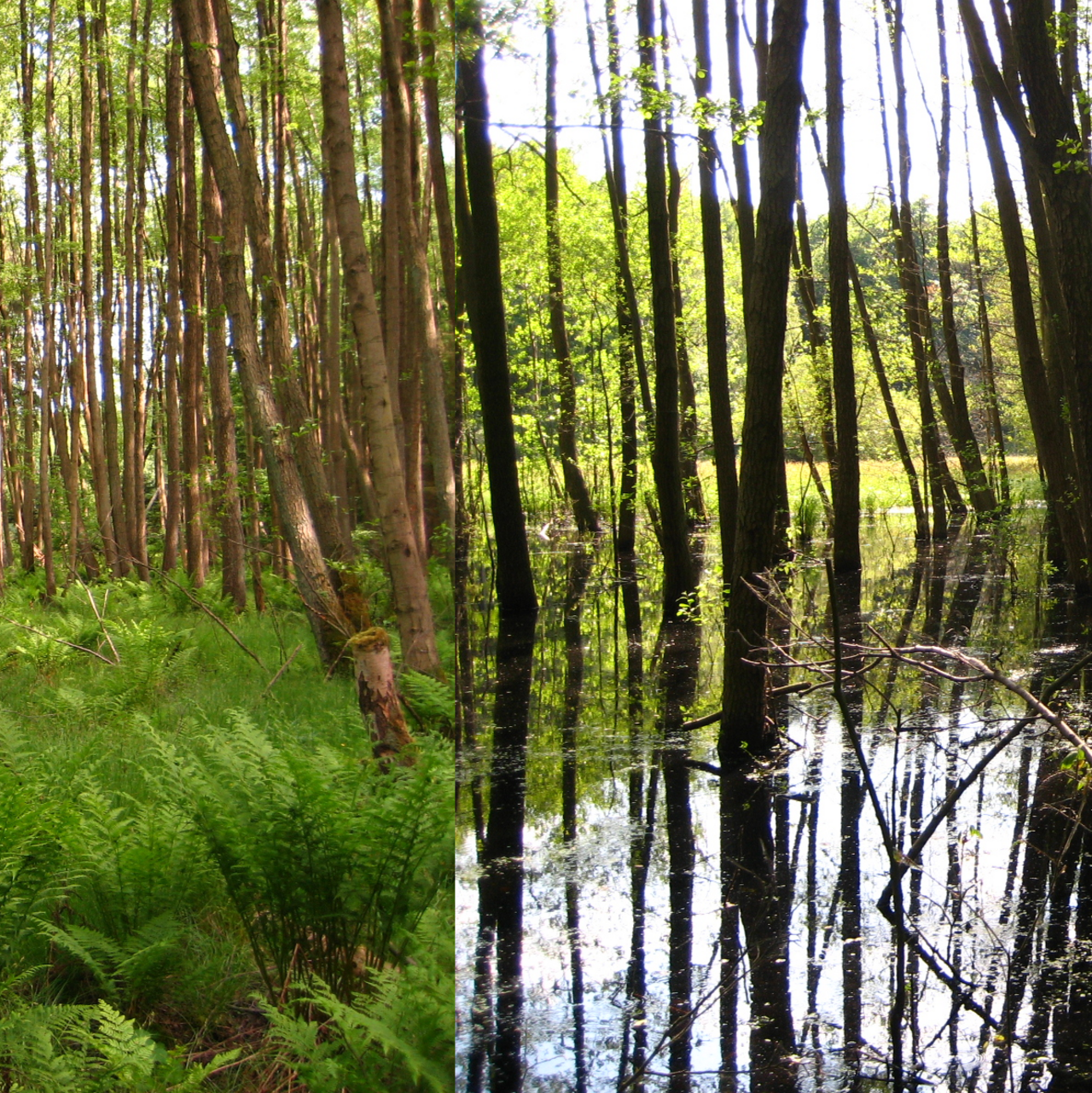Project
Forested peatlands: contribution to biodiversity and climate protection

About 15 percent of Germany's peatlands are forested. What specific contribution do these ecosystems make in terms of biodiversity and climate protection? How can they be used and preserved sustainably?
Background and Objective
Forested peatlands - as naturally forested or silviculturally managed sites on peatland and other organic soils - provide an important contribution to the conservation of native and specific peatland biodiversity. They are relevant links in climate change mitigation through both accumulated carbon stocks in soil and stocks stored in wood. In their natural state, they form important water reservoirs and stabilizers in the landscape water balance.
Due to their frequently underestimated functions and their often degraded state due to drainage, with the release of considerable amounts of greenhouse gases, the task of reconciling the sustainable use of forests on peatlands and their functions for climate protection and biodiversity is more important today than ever before. Among others, this is referred to in the Peatland Protection Strategy of Germany.
The WaMoBiKi project addresses the challenge of systematizing the complex components of these ecosystems for Germany's forest sites according to the current state of knowledge in order to derive concrete strategies and instructions for future action embedded in the current political framework and to communicate them to the relevant decision-makers and actors.
The project is funded by the Federal Agency for Nature Conservation with funds from the Federal Ministry for the Environment, Nature Conservation, Nuclear Safety and Consumer Protection (BMUV).
Target Group
Forest administrations, forest owners, forest sciences
Approach
The forest ecosystems on peatlands are listed, described and assigned in ecograms by means of literature research. These depict the occurrence according to trophy, acid-base ratios and water levels. The researched ecosystem types are supplemented by expert interviews and adjusted if necessary. Based on available data, mire-specific and endangered species of the different natural areas of Germany are listed. Drainage stages are assigned to the peatland sites as well as greenhouse gas emissions, leaching of dissolved organic carbon and flood protection parameters are determined by research. Furthermore, existing silvicultural methods for forest management on wet sites will be elaborated.
In the second phase of the project, best practice examples for the conservation of biodiversity while managing forested peatlands under wet conditions will be researched. Exemplary mapping will be carried out on the respective areas and effects of the change of use will be determined. The areas will be evaluated with regard to their greenhouse gas savings and their effects on the water balance of the peatlands and the landscape water balance. The resulting results will be processed and made available to practitioners.
The project is divided into two areas of responsibility: The Thünen Institute of Forest Ecosystems is responsible for greenhouse gas emissions and water balance. The University of Applied Sciences Eberswalde focuses on biodiversity assessments and silvicultural options for wet forest management. The different areas of investigation are permanently brought together and worked on in close cooperation.
Results
Forest peatlands: their contribution to biodiversity and climate protection
Nicole Wellbrock1, Corinna Schulz1, Steffi Dunger1, Dorit Protze2, Marlene Hilgenfeld2, Peter Spathelf2, Vera Luthardt2
DOI: 10.3220/253-2025-176
Thünen-Contact

Involved Thünen-Partners
Involved external Thünen-Partners
-
Hochschule für nachhaltige Entwicklung Eberswalde (HNEE)
(Eberswalde, Deutschland)
More Information
Project status:
finished

![[Translate to English:] [Translate to English:]](/media/_processed_/9/2/csm_Allgemein_Thueringen_Hainich_Mischwald_Bolte_2__19d9dab56a.jpg)
![[Translate to English:] [Translate to English:]](/media/_processed_/d/2/csm_100_0001_0013_c05c63e7db.jpg)





